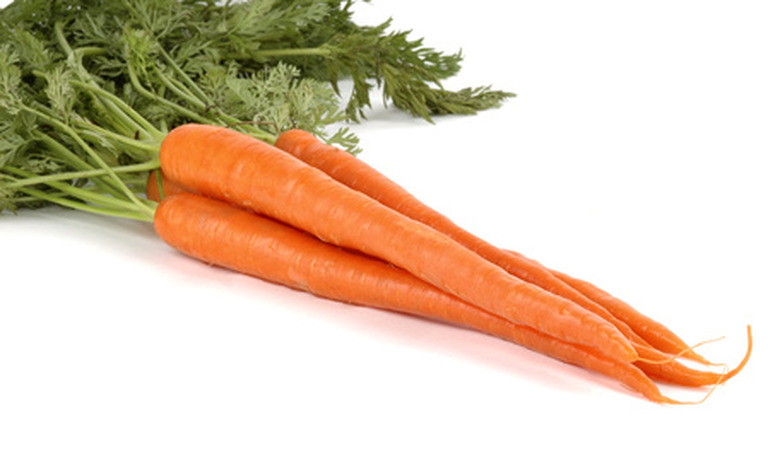The Best Vegetables For A Kansas Garden
Kansas' climate is conducive to growing both tender summer crops and cold-hardy vegetables. The state has a reputation for being one of the flattest in the nation, but in reality its weather and topography are more diverse than meets the eye. It is split rather vertically into USDA hardiness zones 5 and 6, making it ideal vegetable gardening territory.
Beans
Bush and pole beans are considered warm-season vegetables but are sturdy enough to thrive in Kansas summers. Plant beans after all danger of frost has passed and after soil has reached above 50 degrees F, according to Purdue University's Extension Service. Plants enjoy about 1 inch of water per week, making it necessary to water during the state's arid periods, particularly in the plains region to the west.
Southern Peas
Although considered tender annuals, southern peas, or cowpeas, are thought to originate in Africa and can better tolerate hot, dry conditions, according to the University of Arkansas' Division of Agriculture. Plant after the soil has warmed to at least 62 degrees F. Very fertile soil is not desired because it causes excessive vine growth and poor yields.
- Kansas' climate is conducive to growing both tender summer crops and cold-hardy vegetables.
- Plants enjoy about 1 inch of water per week, making it necessary to water during the state's arid periods, particularly in the plains region to the west.
Tomatoes
There are hundreds of commercial and heirloom tomato varieties to choose from, but the best and easiest to grow are those that have been bred for their disease resistance, like Better Boys and Celebrities, according to North Carolina State University's Department of Horticulture. Tomatoes, particularly those grown in Kansas, should be staked or caged shortly after planting to avoid wind damage, and are best planted as seedlings.
Radishes
Radishes are one of the quickest growing vegetables. Ready to harvest in three to six weeks after planting, they make a good cool-season spring crop. In Kansas, they can be planted between March 15 and April 15 but need consistent moisture for best results. They can also be successively planted amidst vegetables that take longer to grow for a continuous harvest, according to HeirloomOrganics.com
Carrots
Carrots are another hardy root crop that can be grown in Kansas in the spring along with radishes. They grow best sown as seeds but should be thinned once their tops start sprouting to avoid overcrowding underground, CarrotGardeningTips.com explains. Gradual thinning should occur as the plants mature until there is about 3 to 4 inches between them.
- There are hundreds of commercial and heirloom tomato varieties to choose from, but the best and easiest to grow are those that have been bred for their disease resistance, like Better Boys and Celebrities, according to North Carolina State University's Department of Horticulture.
- They can also be successively planted amidst vegetables that take longer to grow for a continuous harvest, according to HeirloomOrganics.com Carrots are another hardy root crop that can be grown in Kansas in the spring along with radishes.
Onions
Onions are best grown in the spring in Kansas. They are characterized by day length. Some will stop forming bulbs once day length reaches 14 to 16 hours, while others stop developing when there are only 10 to 12 hours of daylight, Texas A&M University Department of Horticulture states. They like to grow in well-drained soil that contains plenty of nitrogen.
